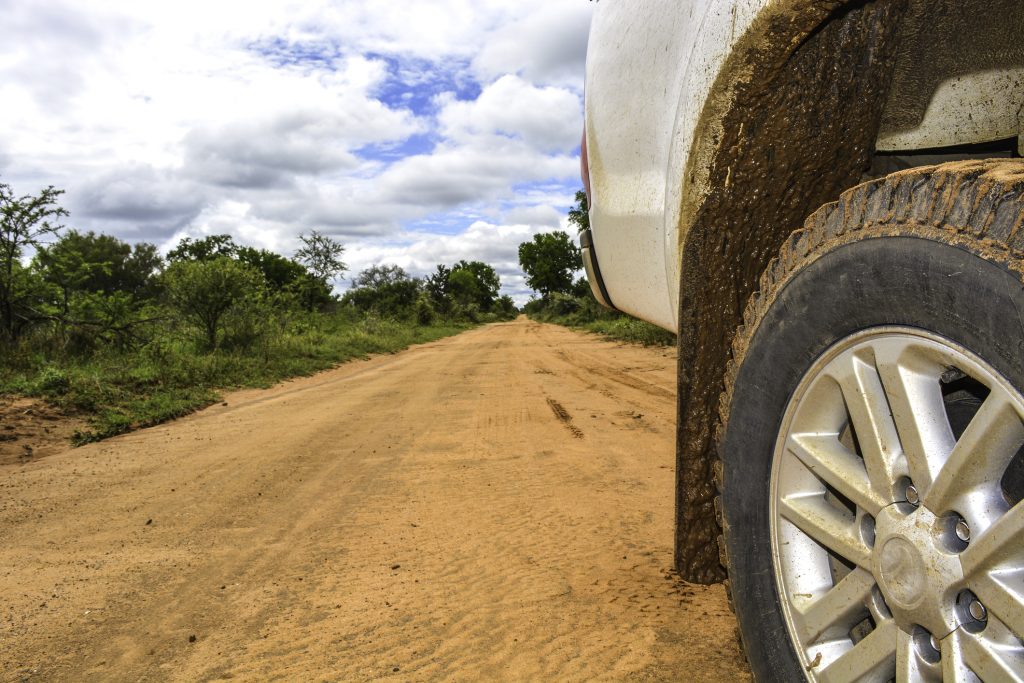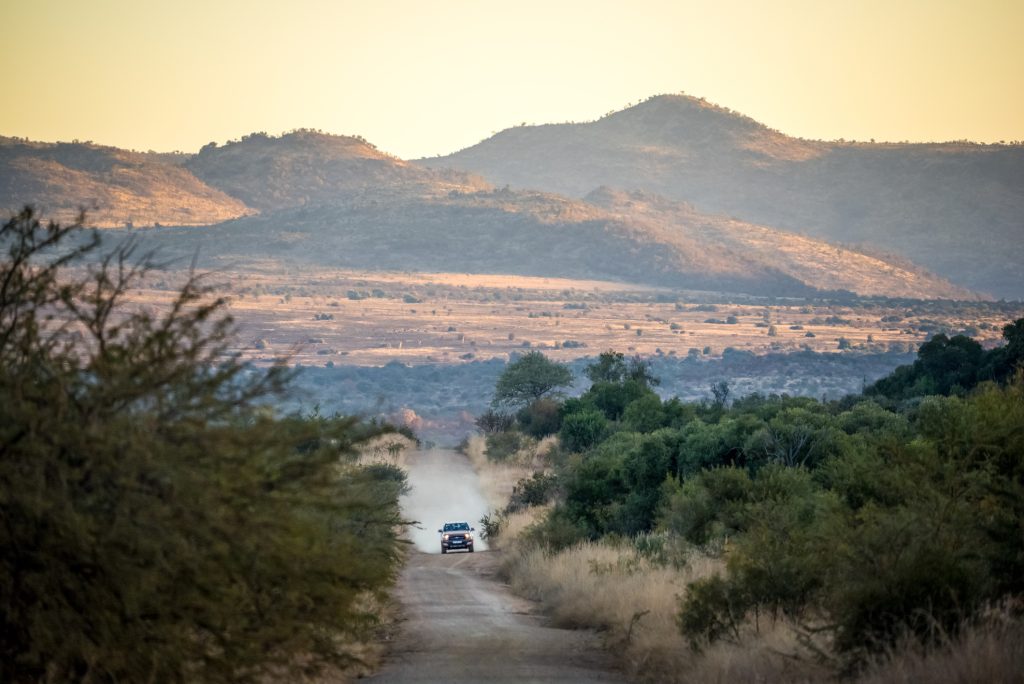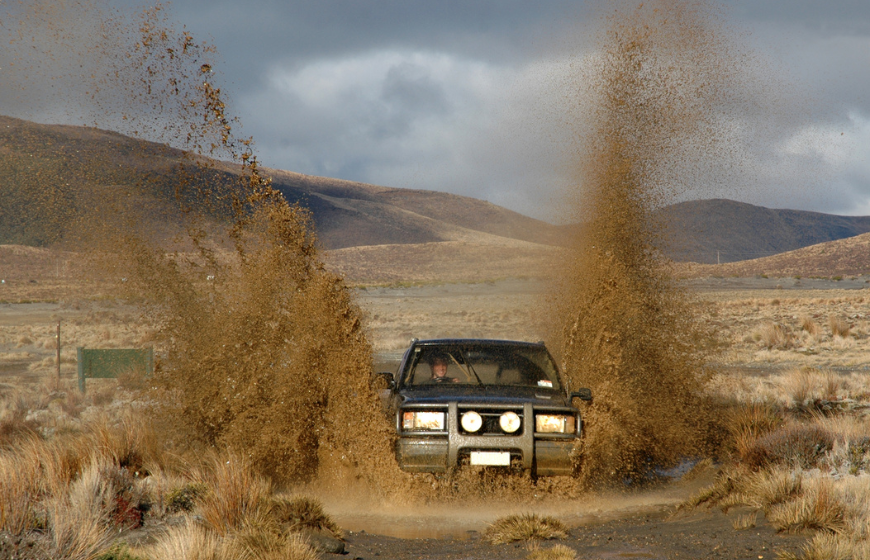
5 Road Trips to Enjoy Over Easter Weekend 2025
Easter Weekend is one of South Africa’s most popular times for adventurous getaways, with local...
 14 April 2025
14 April 2025 
Driving off-road can be an exhilarating aspect of any self-drive adventure. With a 4×4, you can access parts of the wilderness that are off-limits to regular vehicles, opening up entirely different experiences. However, driving off-road requires knowledge, skill, and a healthy amount of common sense.
This guide will help you earn your first stripes in the art of off-road driving, covering everything from understanding the 4×4 system to essential driving techniques and tips. After all, if you decide to hire a 4×4 in countries such as South Africa, you’ll want to make the most of its capabilities. Read on to learn more.
You might also like: Our Picks for Family-Friendly Road Trips in South Africa

Ground level photo of a 4×4’s wheel on a muddy road. Photo: Getty Images
So, you plan to hire a 4×4 for your self-drive adventure in South Africa. First, of all, what is a 4×4? Put simply, it’s a vehicle that can drive all four of its wheels. While most cars are either front-wheel drive or rear-wheel drive, four-wheel drive ensures optimal performance on slippery or uneven terrain.
In your 4×4 rental, you’ll see a rotating dial or button that displays three modes: 2 High (2H), 4 High (4H), and 4 Low (4L). Each mode serves a different purpose. Firstly, 2H is the vehicle’s two-wheel drive mode. In models like the Toyota Hilux, power is only sent to the rear wheels in this mode, making it suitable for on-road driving.
However, when the going gets rough, you can switch to 4H. With this, the vehicle will send power to all four wheels without a significant change in torque. This is especially useful on gravel roads and in situations where you’re driving at a normal speed. Then, there’s 4L. This is where the 4×4 can really show off.
This engages four-wheel drive at low range, providing maximum torque and power to all wheels. A low range transfer case multiplies a 4×4’s torque, trading higher speeds for steady power that can get you up steep hills. This setting is essential for extreme off-road conditions such as deep mud, steep inclines, and rocky terrain. This mode is particularly useful when navigating through dense bush or climbing over large obstacles.
Differential lockers are mechanisms that lock the differential, allowing both wheels on an axle to rotate at the same speed. This prevents wheel spin and maximises traction in extreme off-road conditions. Manual lockers require driver engagement, while automatic lockers activate as needed. Lockers are particularly useful in rock crawling scenarios or when one wheel is in the air – if it starts to spin, it won’t affect the other three, allowing you to keep moving.
Some vehicles don’t have diff-lock, but they do have Limited Slip Differential (LSD) systems. For 4×4 purposes, these systems use wheel sensors and the brakes to stop wheels from spinning when they lose traction, instead sending the power to the other wheels.
Most of the time, you won’t need to worry about adjusting a 4×4’s tyre pressure. However, in certain conditions, a lower tyre pressure can be the difference between off-roading and getting stuck.
Specifically, lowering tyre pressure can significantly increase traction on soft surfaces like sand or mud by increasing the contact area between the tyre and the ground. This helps prevent the vehicle from getting stuck and improves grip. Be careful not to deflate your tyres too much, however, as a flat tyre can easily come off the rim.

4×4 drives through the bushes at Pilanesberg Game Reserve, South Africa. Photo: Getty Images
Depending on the vehicle you choose, you’ll be supplied with a selection of 4×4 recovery equipment, including these basics:

Muddy 4X4 Trail in South Africa. Photo: Canva
If you find yourself in a recovery situation, the first step is always to try to contact the vehicle supplier. However, there are some basic techniques you can use to try to escape a sticky situation.
Sometimes, freeing a stuck vehicle is as simple as digging the wheels out of deep sand, gravel, or mud. You can create a less steep gradient for the wheel to climb. In more serious situations, the vehicle can “belly out”, with the entire underbody pressed against sand. With a bit of elbow grease, you can dig it out so that the weight shifts back onto the wheels.
If you have sand tracks, you can place them directly in front or behind a stuck wheel. This creates an area of good traction, enabling the vehicle to escape a situation where it can no longer move.
If you’re travelling with another vehicle in the group, you can use one 4×4 to free another. These vehicles feature specific tow points on the front and rear of the chassis. It’s vital that you attach the strap here – attaching it anywhere else can result in serious damage and can hurt bystanders.
If you get stuck and need urgent help, please reach out to the vehicle supplier immediately. Depending on where you are, they will be able to dispatch a recovery vehicle to get you out of trouble. The contact details will be noted on your Booking Confirmation.
Mastering off-road driving requires understanding your vehicle, practising essential techniques, and knowing when to use advanced features like 4H, 4L, and diff-locks. By preparing adequately and respecting the environment, you can enjoy thrilling off-road adventures safely and with total peace of mind.
Ready to tackle the dunes, slopes, and river crossings? Choose from Drive South Africa’s extensive selection of 4×4 vehicles and get going on your self-drive, off-road adventure. Use the handy booking form at the top of the page to rent a 4×4 today. Stay safe and see you on the trails!